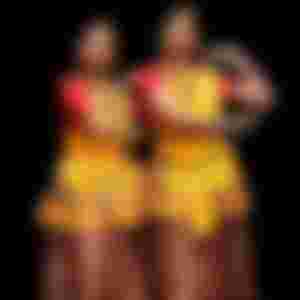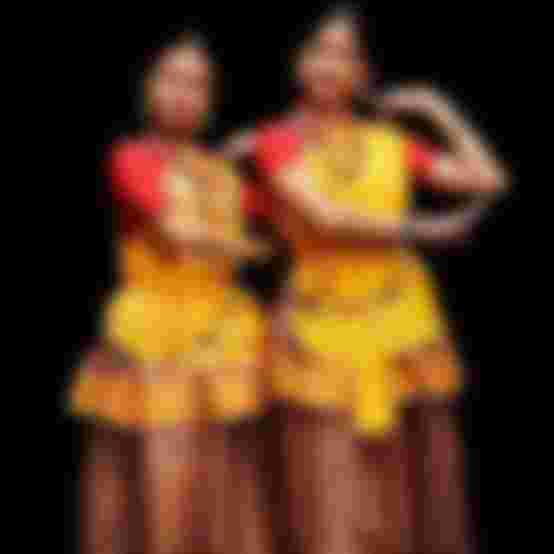
Dance Tradition in Ancient Bengal
In order to have precise notion about the advancement of a nation, there is little scope to pay indifferent look to its culture. If it is so, the acquaintance will be dim and almost meaningless. To find the answer, how much old the Bangalees as a nation and since when we have been identified as Bangalees, we need to study the disciplines of human knowledge-like anthropology, history, language, literature, culture etc. And needless to say, the scope ofculture is enormously wide-belief, behaviour, habits, dance, music and what not?As in case of numerous branches of ancient Bengali culture, we do not get adequate information about dance. Hence, we cannot tell about ancient dance culture following the mathematical account, two and two make four. But if we pay attention to our classic literature, epigraphs, history of art we can have an idea it and the present article is based on such information.Having information from Ramayana1 Charyagitika, Dohakosh, Ramacaritam, Pavandutam, Aryasaptasati, ragatarangini, Sangeetamodar, Brihatdharmapuran, Bramhavaivartapurana, Orders and Psalms of Pala Sena regime and specially from terracotta and sculptures found during the Pala regime, we can deduce that the dance culture prevailed in both higher and lower classes of people in Bengal.Bararama and woman belonging to the community of slaves to gods usually participated to dance performed in temples.Reference to dance is also found in Charyagitika and Nathagitika, which are considered the oldest instances of Bengali literature.The bratya dominees (lower class of women) of charyapada were expert in dance and music. kanhapadanam, one of the authors of Charyapada, writes in a verse:ek so padma chosatti pakhuri,tanhi chari nach o dombi bapuri.2It means that a lotus has sixty-four petals and a dominee dance on them. Dancers of this dance as described in Charya, belonged to the class of antaja (lower class) women. They danced to recreate the mind of aristocratic people. Hence, they could take dance as their profession at the consent of the society they lived in. At that time, dance was also introduced in dramas. It can be conjectured from the context of Buddhist drama written in the charya of Binapadanam:“nachanti bajila ga antidevibuddha nataka bisma hoie.”3Dancing female: Paharpur terracotta (c. 9 century A.D)It means that Brajacharya dance the goddess sings and Buddha drama are verydifficult or hard. Kalhan says in ‘Rajatarangini’, the dance, which was performed in the Kartikeya temple at Pundravardhana (Now at Mahasthan in Bogra), totally followed the principles of Indian drama. Kalhan depicts, when Joyapeer, the king of Kashmir entered into Pundravardhana in disguise, Kamala, a familiar dancer, was dancing with hymn in the temple of Kartikeya.
parabibesh kramaynathanagarang Poundravardhanamlashyang sha dristam bishat kartikeya-niketanambhartalugamalaksma nityagitadi mantryachittatadeva grihaddara shila mdhyasta saksyanamnartaki kamalar namakantimantong dadarshatam4
On the other hand, in the ‘Brihatdharmapuran’ and Brahmavaibartapurana’s, dancers are described, and it is said that they belonging to the lower class of people lived on dancing and singing and they were not allowed to take part in other social activities.The role of aristocratic class in dance culture of ancient Bengal was not negligible. It is known that Padmawati, wife of Joydeva, a familiar poet, earned much reputation as dancer in her pre-married life. Another instance in this connection may be quoted here that Behula as described in the Manasamangala, was expert in dance and music. She danced in the court of gods to save the life of her husband.devata sobhai giyakholkaratal layanachey kanya Behula nachani.5And the gods being pleased at the dance, returned the life of Laksmindar, husband of Behula.Govardhanacharya, a court-poet to Laksman Sena, describes the relation of music to dance in ‘Aryasaptasati’ in details. This poetical work reveals cordial feelings as expressed in gestures and postures of dancers. Lochanpandit, another court poet of Sena kings, mentions about slaves to gods and barabama in his Ragatarangini. He also mentions about ‘tambaru’, a drama from which it can be deduced that the drama was introduced with dance and music. Suvankara was one of the 111 poets as described in ‘Sangitdamodar’. It was devided in five chapters of which one chapter was totally dealt with dance.In ancient Bengal, temples were simultaneously theater halls, where dance and music were regularly performanced. It is confirmed from some scenes about dance and music found in terracotta’s discovered at Paharpur and Mainamati Vihara in Bangladesh. These scenes of women dancing and singing represent classic dance and music. Not only that, these scenes were drawn to present vivid picture of common and simple life. Dancing gods and goddesses and other dancers are also found in stone sculptures.It can be said that dancing Nataraja, Ganesa, Dasavatara, and other gods and goddesses are glaring instances of the dance culture of Bangalee tradition.If we pay deep attention, we can find that there is close relation between classic dance and traditional dance of ancient Bengal.While introducing the complete identity of the Bangalee nationhood, we do not have the scope of attaching less importance to dance culture as we do it in case of other fields of ancient culture, otherwise it will remain incomplete.
Reference:1. Benoykumar Sarkar, ‘The Folk Element in Hindu Culture’, New Delhi, 19722. Charyapada no. 10 (kanhupadanam)3. Charyapada no. 17 (Visnupadam)4. Kalhan’s Rajatarangini, vol. v, Bengali Translation, Calcutta 1317 BS, Ps. 349.5. Ketakadas khemananda’s Manasamangala, Ed. Akshay Kayal & Chitra Deva, Calcutta, 1384 BS, P.273.6. Laksmansena Ragatarangini, Calcutta.
Writer: Saifuddin Chowdhury, Professor of Folklore, Rajshahi Universityhttp://www.theindependentbd.com/

Yes, I am sub. you. Nice to meet you.